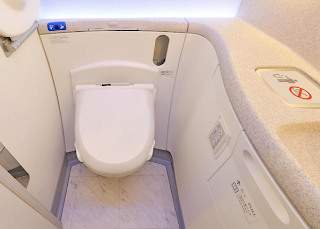Tips for minimizing cellular roaming charges on iPhone
updated April 2023
International roaming (using your home mobile phone on a foreign carrier's network while you're traveling) used to be insanely expensive. With the widespread adoption of eSIMs, it's gotten a lot simpler and cheaper. We've used Ubigi and GigSky eSIMs and have had good luck with both of them.
International roaming (using your home mobile phone on a foreign carrier's network while you're traveling) used to be insanely expensive. With the widespread adoption of eSIMs, it's gotten a lot simpler and cheaper. We've used Ubigi and GigSky eSIMs and have had good luck with both of them.
We've also used T-Mobile's free and paid International Roaming options. The free option is fine for texting but too slow for normal usage. The paid plan is faster, but is still 3x the price per GB of an Ubigi eSIM. Plus, T-Mobile's website is just awful to use and I've actually had difficulty on several occasions trying to purchase their paid roaming plan.
eSIM data has gotten so cheap that it might not even be worth worrying about trying to throttle your own usage. I mean, once you account for flights, hotel, souvenirs, dining, and drinking, your vacation is probably costing you north of $40 an hour. Why waste one of these $40 hours trying to save $2 in data roaming?
That said, here's a few very American iPhone-centric tips:
- Viewing or uploading pictures or video uses data very quickly, do that only on Wi-Fi. Same thing with streaming music (e.g., Spotify), FaceTime and Skype.
- Closing all your apps and locking your phone's screen does NOT stop your phone from accessing the internet – lots of background tasks will eat through your roaming data while your phone sits in your pocket. Put the phone into Airplane mode if you want to be certain.
- Large file transfers (like email attachments, App updates, iOS updates, Dropbox and iCloud photo sync) can also use a ton of data. Definitely disable cellular data for iCloud Photo Sync (Settings > Photos)
- Be very careful if you decide to enable Tethering (called "Personal Hotspot" on iOS), a laptop can chew through data very quickly, so enable "Low Data Mode" in the Wi-Fi settings, and think about using this awesome little tool (for MacOS and Windows) to add powerful controls over which applications can access the internet.
- Facebook and Instagram both have deeply-nested preference controls (that they love to move around with each new release) for minimizing their data usage. Poke through the preferences and try to disable things that hog data (like auto-play of videos).
- Do a bit of research about free Wi-Fi in the areas you're going to. In Tokyo, for example, most of the urban JR and subway stations have it, as do nearly all of the convenience and department stores, so connectivity is rarely more than 5 minutes' walk away.
- Consider putting your phone into Airplane Mode while you sleep. If your phone becomes disconnected from the hotel Wi-Fi, it will fall back to Roaming and could eat up data while you sleep.
- If you really wanna dig in there, go into Settings > Cellular, disable Roaming for every app except the ones you're actively using while roaming. Lots of apps will passively use your data even when they aren't launched, and you don't want, for example, AirBnB sneaking on to the network when you all you wanted to do was enable Roaming to send a quick iMessage. But be careful you don't disable things you might actually need (e.g., Find My).
Other tricks
- Download map (like this one for Tokyo) and subway apps (like this one) for the area you're visiting. These usually let you find your way without needing the network
- Use the "Save for Offline Use" feature of Google maps so you can find your way without cellular service.
- While you're there, turn off Satellite view in Google maps
- Load up directions to your next destination before you leave the Wi-Fi at your home, hotel, or cafe so you can navigate without connectivity.
- Another good thing to do before leaving comfort and safety of Wi-Fi is to open Safari and close all of the open "tabs" there. Since you'll likely use it when you're roaming, you don't want it to run back and reload or cache any of those other sites while you're looking something up.

Close all those browser tabs before you roam! - Don't be shy about asking restaurants or cafes for their Wi-Fi password, the worst that can happen is they say no.





roaming sim card
ReplyDeletehttp://xxsim.com/
XXSIM a world SIM card and save 90% cheaper for outgoing calls Free SMS to any XXSIM from the website GPRS Data much cheaper, no minimum invoiced amount Same quality You control the expenses with the Prepaid system Go Global’ but ‘Pay Local.